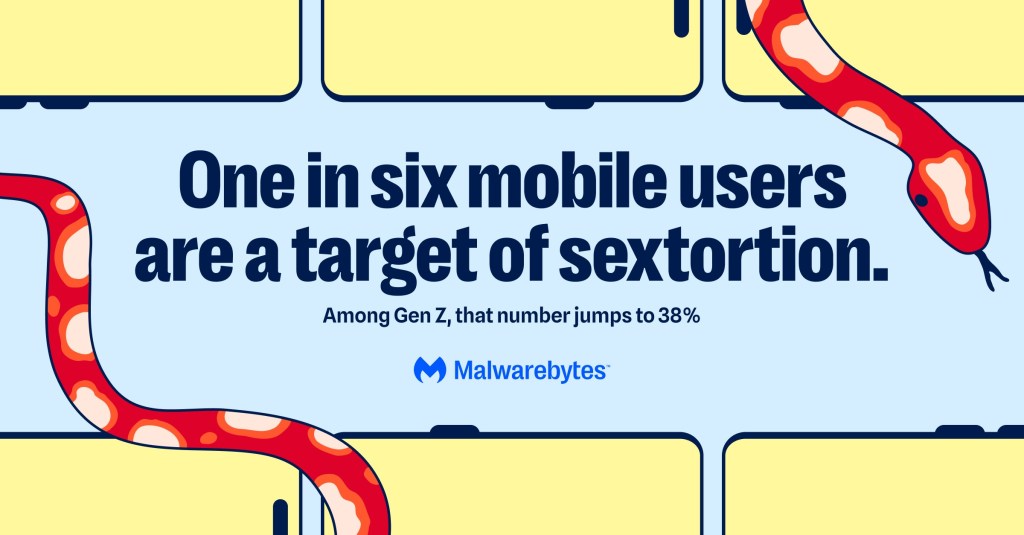
by Malwarebytes Labs
Gone are the days when extortion was only the plot line of crime dramas—today, these threatening tactics target anyone with a smartphone. As AI makes fake voices and videos sound and look real, high-pressure plays like sextortion, deepfakes, and virtual kidnapping feel more believable than ever before, tricking even the most digitally savvy users. Gen Z and Millennials are most at risk, accounting for two in three victims of extortion scams. These scammers prey on what’s personal, wreaking havoc on their victims’ privacy, reputations, and peace of mind.

Our latest research shows that one in three mobile users has been targeted by an extortion scam, and nearly one in five has fallen victim. Gen Z is hit hardest: more than half (58%) have been targets, and over 1 in 4 (28%) have been a victim. Sextortion—threatening to leak nude photos or videos or expose pornographic search history— is particularly notable, with one in six mobile users reporting they’ve been a target. Among Gen Z, that number jumps to 38%.
Five things to know about mobile extortion scams
1. Who’s most at risk: Gen Z and Millennials with a risk tolerant profile
Compared to victims and targets of other types of mobile scams, extortion victims tend to be younger, male, and mobile-first. Their profile:
- Young: 69% of victims and 64% of targets are Gen Z or Millennial (vs. 52%/40% of victims and targets of other types of scams, respectively)
- Male: 65% of victims and 60% of targets are male (vs. 48%/45%)
- Parents: 45% of victims and 41% of targets are parents (vs. 36%/26%)
- Minorities: 53% of victims are non-white (vs. 39%)
- Mobile-first: 52% of victims and 46% of targets agree “I’m more likely to click a link on my phone than on my laptop” (vs. 42%/36%)
However, this simply shows how targets and victims skew. Behaviors typically play a bigger role in overall risk.
